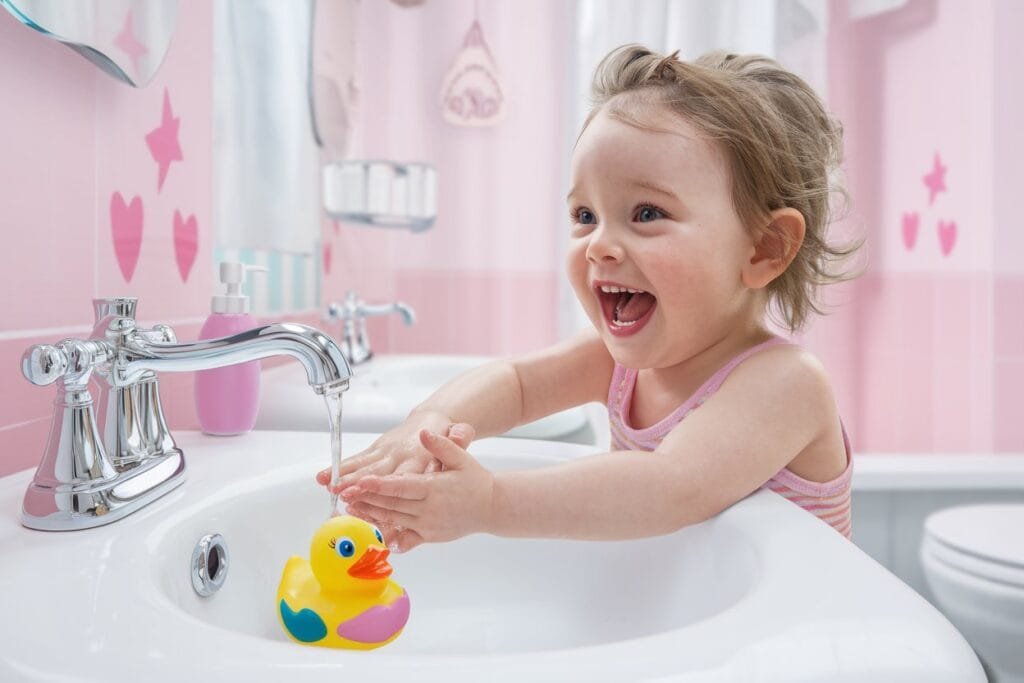Understanding the Psychology of the Unknown
For many children, bath time isn’t a joyful splash-fest, but rather a source of anxiety and distress. One of the key culprits behind this bath time battle is the “Fear of the Unknown.” This fear stems from a child’s natural apprehension towards unfamiliar sensations and situations. In the context of bathing, it can manifest in various ways, transforming what should be a simple hygiene routine into a stressful ordeal.

From a developmental psychology perspective, the fear of the unknown is a common and completely normal phase. Children are constantly learning about their world, and anything new or different can trigger feelings of unease.
- Sensory Overload: The bathroom environment is full of new and potentially overwhelming sensory inputs. The sound of running water can be loud and startling. The feeling of water on their skin, the temperature changes, the slippery surface of the tub, and even the smell of soap can all contribute to sensory overload, making the child feel insecure and out of control.
- Lack of Control and Predictability: Children thrive on routine and predictability. Bath time disrupts their usual routine and places them in a situation where they have little control. They may not understand the process, which can lead to anxiety. Being undressed, placed in a tub, and having water poured over them can feel like a loss of control, triggering fear.
- Separation Anxiety: Particularly in younger children, bath time can evoke separation anxiety. The child is often alone in the tub, potentially separated from their caregiver for a period, which can heighten their fear of the unfamiliar.
- Imagination and Misinterpretation: Children’s imaginations are incredibly vivid. They might misinterpret the swirling water going down the drain as something scary or imagine creatures lurking in the depths. These imaginative fears, though seemingly irrational to adults, are very real to a child.

How Fun Bath Products Can Be a Powerful Antidote
This is where our fun bath products come in, acting as powerful tools to reframe the bath time experience from one of fear to one of fun and exploration:
- Creating a Positive Association: The primary way fun bath products help is by creating a positive association with bath time. Instead of viewing the tub as a scary, unfamiliar place, children begin to associate it with enjoyable toys, vibrant colors, and engaging scents. This positive association helps to neutralize the negative feelings related to the unknown aspects of bathing.
- Distraction and Engagement: Fun bath products provide a welcome distraction from the unfamiliar and potentially scary elements of bath time. A child engrossed in playing with a rubber ducky, pouring water with colorful cups, or watching bath bombs fizz is less likely to focus on the aspects of bathing that trigger their anxiety.
- Sensory Exploration in a Safe Space: Many bath products are designed for sensory play. Bath crayons allow children to explore their creativity on the tub walls. Fizzy bath bombs introduce exciting colors and textures. Scented bubble baths engage their sense of smell. This allows children to explore the sensory aspects of bath time in a way that feels safe and controlled, gradually desensitizing them to the unfamiliar sensations.
- Empowerment and Control: Sjhadaes bath products can give children a sense of control and agency during bath time. Allowing them to choose which bath bomb to use, which toy to play with, or which color of bath crayon to draw with gives them a sense of ownership over the experience, reducing their feelings of helplessness.
- Making it a Playful Ritual: Fun bath products can transform bath time from a chore into a playful ritual. The anticipation of using a special bath bomb, playing with a favorite bath toy, or creating a bubbly masterpiece can shift the child’s mindset, making them excited about bath time rather than dreading it.
- Bonding and Connection: Interactive bath products can facilitate bonding between parents and children. Playing together, exploring the colors and textures of bath bombs, or simply sharing laughter during bath time strengthens the parent-child bond and creates a sense of security and trust, reducing the child’s anxiety.

It’s crucial to remember that overcoming the fear of the unknown takes time and patience. Here’s how you can use fun bath products effectively while addressing the underlying fear:
- Introduce Gradually: Don’t overwhelm a child with too many new products at once. Start with one or two and gradually introduce more as the child becomes more comfortable.
- Let Them Choose: Empower your child by allowing them to choose which bath products they want to use.
- Talk It Out: Validate their feelings and talk to them about their fears in a calm and reassuring manner. Let them know it’s okay to be scared and that you’re there to help them.
- Make it Predictable: Establish a consistent bath time routine to help your child know what to expect.
- Celebrate Small Victories: Acknowledge and praise your child’s progress, no matter how small. Every step towards overcoming their fear is a victory.

The fear of the unknown is a common hurdle in making bath time enjoyable for children. By understanding the psychological roots of this fear and utilizing the power of fun bath products, you can transform bath time from a battleground into a positive, engaging, and even joyful experience. Remember that patience, empathy, and a sprinkle of playful fun can go a long way in helping your child conquer the unknown depths of the bathtub and discover the joy of splashing around.
Author Chris Fourie
Previous Story
The Psychology Behind Bath Time Struggles
